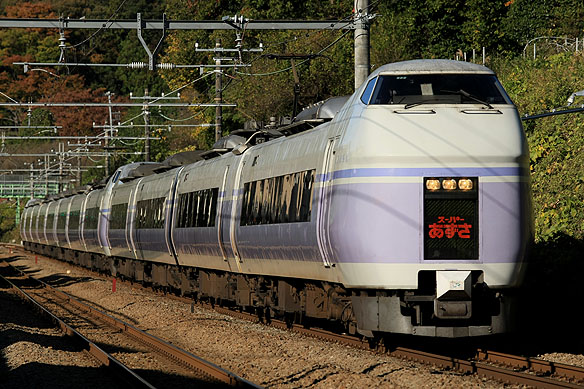JR East developed pre-production type of E351 series EMU for the Chuo Line
"Azusa" services in order to shorten the required time and improve
passenger's accommodation in 1993.
They consist of 8 cars for the regular formation and 4 cars for the auxiliary
formation. E351 series are equipped with tilting system with electrical
control to gain speed at a curve and improve comfort to ride. Bodies are
constructed by steel. All air conditioners, including those of motored
cars, are fitted under the floor in order to make their centre of gravity
lower. End cars coupling with another formation have equipped with the
through door and automatic top pulling equipment. Bogies are DT62/TR247
with built-in roller devices for body tilting system, and equipped with
yaw dampers to ensure smooth ride characteristics even at high speed. In
addition, the current collectors are fitted with the frames to bogies so
that current collectors may not deviate very much from the overhead contact
line at the time of body tilting.
The AVAF (Adjustable Voltage Adjustable Frequency) inverter controls 4
traction motors rated at 150kw. E351 series feature the electric commanding
brake with regenerative brake.
All seats are adjustable reclining. 1st class vehicles have 2+2 abreast
seating and seat pitch is 1160mm and standard class vehicles have 2+2 abreast
seating and seat pitch is 970mm.
Pre-production type of E351 series were modified to bring them up to mass-production type of E351 series and classified into E351-1000 series. E351-1000 series feature. Modifications included featuring mixed regenerative-dynamic braking under low possibility of regeneration, and replacing the original PS26C lozenge-type current collectors with PS31A single-arm current collectors.
Now E351 series are used on the "Super Azusa" intercity services
linking Shinjuku and Matsumoto. |
|

